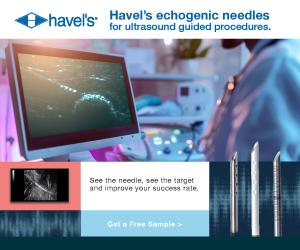▼ ADVERTISEMENT

Editor's E-Note
Large language models (LLMs) are increasingly being used in radiology to assist with reports, decision support, and communicating with patients, among other uses. Although they offer many potential benefits, they are not without risk, however. A recent report highlights some vulnerabilities that radiology departments need to be aware of. Read on to learn more.
For more of the latest imaging news, visit us on X, formerly known as Twitter, and/or Facebook.
Enjoy the newsletter.
— Dave Yeager, editor |
|
|
| In This E-Newsletter
|
▼ ADVERTISEMENT
 |
|
|
▼ ADVERTISEMENT

LLMs Pose Potential Cybersecurity Threats in Radiology
In a new special report, researchers address the cybersecurity challenges of large language models (LLMs) and the importance of implementing security measures to prevent LLMs from being used maliciously in the health care system. The special report was published recently in Radiology: Artificial Intelligence, a journal of the RSNA.
LLMs, such as OpenAI’s GPT-4 and Google’s Gemini, are a type of AI that can understand and generate human language. LLMs have rapidly emerged as powerful tools across various health care domains, revolutionizing both research and clinical practice. These models are being employed for diverse tasks such as clinical decision support, patient data analysis, drug discovery, and enhancing communication between health care providers and patients by simplifying medical jargon. An increasing number of health care providers are exploring ways to integrate advanced language models into their daily workflows.
▼ ADVERTISEMENT

“While integration of LLMs in health care is still in its early stages, their use is expected to expand rapidly,” says lead author Tugba Akinci D’Antonoli, MD, neuroradiology fellow in the department of diagnostic and interventional neuroradiology at University Hospital Basel in Switzerland. “This is a topic that is becoming increasingly relevant and makes it crucial to start understanding the potential vulnerabilities now.”
LLM integration into medical practice offers significant opportunities to improve patient care, but these opportunities are not without risk. LLMs are susceptible to security threats and can be exploited by malicious actors to extract sensitive patient data, manipulate information, or alter outcomes using techniques such as data poisoning or inference attacks.
|
▼ ADVERTISEMENT

Broad Genomic Profiling for Cancer Treatment
Broad genomic profiling is an emerging form of oncology that understands a tumor’s genetic makeup to better treat it. Despite its potential, it remains largely unused, according to Yale School of Medicine.
Despite Skepticism, Patients Generally Support AI Use
A study published in Radiology: Imaging Cancer revealed that more than 50% of surveyed patients support the use of AI as a second reader for mammography.
New MRI Technique Reveals Heart Age
A new heart MRI developed by the University of East Anglia can determine the age of patients’ hearts by measuring the “size and strength of the heart’s chambers.” That data is then measured against healthy hearts to ensure accuracy. |
“The ability to visualize these protein aggregates in living patients represents a significant leap forward in neurodegenerative disease research. A suitable radiotracer that can noninvasively map synucleinopathies through PET imaging will lead to breakthroughs in early diagnosis, monitoring disease progression, and evaluating treatment responses.”
— Fang Xie, PhD, researcher at the department of nuclear medicine and PET Center at Huashan Hospital and corresponding author of a study visualizing proteins in the brains of Parkinson’s patients |
|
|
COVER STORY
New PET
With dementia rates predicted to double in the coming decades, researchers are developing new methods to detect the disease and slow its progression.
FEATURE
Dynamic Detection
Standard prostate MRI tends to miss low-grade carcinomas. However, a new MRI technique combines multiple sequences to prevent such misses and enhance diagnoses.
|
|
|
| Advertising Opportunities |
Have a product or service you want to market to radiology professionals? Utilize the reach of Radiology Today Magazine to accomplish your marketing goals. Email our experienced account executives today at sales@gvpub.com or call 800-278-4400 for more information.
|
| © 2025 Radiology Today Magazine |
|
|